Recent Posts
How do I know if there is water damage?
9/27/2023 (Permalink)
How to Check your home for Water Damage
Whether you've just been through a storm or are doing regular maintenance on your home, checking for water is always a good thing!
Don't wait until a BIG disaster happens!
Taking the time to complete the steps below periodically; Can save you from that big disaster and will keep that hard earned cash in your pocket!!
Step 1 - Check the Walls
The easiest sign of water damage to spot is water stains on the walls and ceilings. Also check around the window and door frames for stains.
Any unusual stains should be taken seriously, as they could be a sign of a leaky pipe or drain inside the wall.
Also look for cracks in the drywall and bubbling under the paint. An area of wall that has been exposed to water can also have a swollen appearance and be soft to the touch.
Step 2 - Check the Floors
Water damage can happen to any type of flooring and can also seep down to the sub floor.
Look for any warping or buckling of the floors, especially in the basement. If the floor looks warped, water damage is most likely the cause.
Step 3 - Check the Pipes
Inspect the piping in the kitchen, bathrooms, laundry room, and basement for corrosion around the pipe connections, leaks, or water stains.
Inspect the caulking around the bathroom fixtures. Missing or loose caulking could be caused by water seepage.
Look for missing grout or signs of mold. Check the water heater for wet spots on the floor and rust on the tank.
Step 4 - Check the Basement
Basement leakage is a common problem found in houses. Water in the basement often causes damage to the flooring, baseboards, walls, and furniture.
Additionally, odors caused by mold and mildew can be unpleasant and even cause health problems.
Inspect for cracks, stains, rust, dampness, mold, and odors. If you have drywall in your basement, Water can wick up it. Check all drywall for signs of water or water stains.
Step 5 - Check the Attic
Check the attic for stains, mold, and other signs of leaks.
Pay special attention to the valleys where 2 roof planes come together, the flashing where the roof meets the walls, and the flashing around roof vents and chimneys.
The insulation should be dry and in good condition. Houses located in cold climates can develop ice dams on the roof, which cause water to leak into the attic from melting snow and ice on the roof.
Also make sure that attic ventilation is sufficient.
Step 6 - Check the Exterior
Make sure to check the exterior of the house as well.
Check the roof for damaged flashing and missing, cracked, or curled shingles. If you see standing water anywhere outside the home, it could be the sign of a problem.
A puddle could be due to poor drainage in the yard, leaky rain gutters, or gutter spouts that don t take water far enough from the house.
The house should be situated on the highest point of the property, with the ground sloping away from the house.
If you see any signs of water damage in your home; call 1-603-298-6942 today. Don't let that small amount of water become a HUGE problem for you!
Let's learn about FIRE
6/30/2023 (Permalink)
A fire can happen to anyone at anytime, but the Holiday season is peak season!
Winter is quickly approaching as well as the holiday season. This time of year automatically raises the chances of fire in our homes. Many of us in the Northeast have woodstoves that heat our homes, upping the risk of fire and puffback.
The holiday season brings with it another element of fire concern, We need to concern ourselves with kitchen safety! We do a lot of cooking and baking during the holiday season. According to the NFPA, Thanksgiving is the peak day for home cooking fires, followed by Christmas Day, the day before Thanksgiving, and Christmas Eve.
Now that we know how prevalent fires are around the holiday season, Let's Learn about FIRE!
Fire is FAST! In less than 30 seconds a small flame can turn into a major fire. It only takes minutes for thick black smoke to fill a house or for it to be engulfed in flames.
Fire is HOT! Heat is more threatening than flames. Room temperatures in a fire can be 100 degrees at floor level and rise to 600 degrees at eye level. Inhaling this super-hot air will scorch your lungs and melt clothes to your skin.
Fire is DARK! Fire starts bright, but quickly produces black smoke and complete darkness.
Fire is DEADLY! Smoke and toxic gases kill more people than flames do. Fire produces poisonous gases that make you disoriented and drowsy. Asphyxiation is the leading cause of fire deaths, exceeding burns by a three-to-one ratio.
Before a Fire Occurs
Create and Practice a Fire Escape Plan
Twice each year, practice your home fire escape plan. Some tips to consider when preparing this plan include:
Find two ways to get out of each room in the event the primary way is blocked by fire or smoke.
A secondary route might be a window onto a neighboring roof or a collapsible ladder for escape from upper story windows.
Make sure that windows are not stuck, screens can be taken out quickly, and that security bars can be properly opened.
Practice feeling your way out of the house in the dark or with your eyes closed.
Teach children not to hide from firefighters.
Smoke Alarms
A working smoke alarm significantly increases your chances of surviving a deadly home fire.
Test batteries monthly.
Install smoke alarms on every level of your home, including the basement, both inside and outside of sleeping areas.
Never disable a smoke alarm while cooking – it can be a deadly mistake.
During a Fire
Crawl low under any smoke to your exit - heavy smoke and poisonous gases collect first along the ceiling.
Before opening a door, feel the doorknob and door. If either is hot, or if there is smoke coming around the door, leave the door closed and use your second way out.
If you open a door, open it slowly. Be ready to shut it quickly if heavy smoke or fire is present.
If pets are trapped inside your home, tell firefighters right away.
If you can’t get out, close the door and cover vents and cracks around doors with cloth or tape to keep smoke out. Call 9-1-1 or your fire department. Say where you are and signal for help at the window with a light-colored cloth or a flashlight.
If your clothes catch fire, stop, drop, and roll – stop immediately, drop to the ground, and cover your face with your hands. Roll over and over or back and forth until the fire is out. If you or someone else cannot stop, drop, and roll, smother the flames with a blanket or towel. Use cool water to treat the burn immediately for 3 to 5 minutes. Cover with a clean, dry cloth. Get medical help right away by calling 9-1-1 or the fire department.
After a Fire
Contact your local disaster relief service, such as The Red Cross, if you need temporary housing, food and medicines.
Check with the fire department to make sure your residence is safe to enter. Be watchful of any structural damage caused by the fire.
The fire department should see that utilities are either safe to use or are disconnected before they leave the site.
DO NOT attempt to reconnect utilities yourself.
If you are insured, contact your insurance company
Try to locate valuable documents and records.
You will need a Fire Damage and Restoration team. Contact SERVPRO of Lebanon/Hanover/Littleton at 603-298-6942 24 hours a day.
Common causes for water damage
6/30/2023 (Permalink)
THE 5 MOST COMMON CAUSES OF WATER DAMAGE IN YOUR HOME.
There are so many things that can damage your home. Wind,earthquakes,fires,storms and WATER.
Water Damage being the most frequent of all.
Here are the 5 most common causes of water damage in your home
Air Conditioner
Your air conditioner might seem to be working just fine, but it’s important to adhere to regular service dates (at least once each year) to ensure nothing is malfunctioning behind the scenes. Your A/C removes moisture from the air, and sometimes that moisture builds up within the A/C itself. If not properly drained, that water could be slowly leaking into your home – potentially ruining the flooring and drywall and, in many cases, introducing mold.
Dishwasher
Dishwashers are another possible culprit of water damage in your home. Your dishwasher can cause water damage if not properly sealed, meaning that the latch is broken, or if it was loaded with the wrong soap. Make sure that any leaks are immediately addressed and that your dishwasher is repaired or replaced ASAP.
Washing Machine
Perform regular checks on your washing machine, inspecting beneath the unit as well as behind it. Make sure all fittings are securely connected, and that the underbelly of the washing machine isn’t leaking any water beneath the unit. If you have an older washing machine that gives you frequent issues, consider replacing it altogether.
Leaking Pipes
It might seem obvious, but water damage in the home is often caused by leaky pipes. Let’s pretend that you have a loose-fitting pipe under the kitchen sink or in the bathroom, and you’ve just recently water pooling in that area. Don’t wait to call a plumber – a leak in one place in your home could signify leaks in other areas, too.
Clogged Drains
Clogged drains aren’t just annoying, they also cause water damage (and mold growth) if left unchecked. If your toilet is clogged, it means that not only can you not use the toilet, but you will likely also experience water backing up into the shower, sinks, or bathroom floor. Sewer water is extremely dangerous because it contains raw sewage and bacteria, and must be cleaned up by a professional.
If your kitchen sink drain is backing up, you can experience sink overflow and subsequent damages to your kitchen flooring and cabinetry. Make sure to seek professional help when experiencing frequent drain clogs so you don’t have to deal with water damage to your home on top of the clog itself.
If you are experiencing leaks in your home Call SERVPRO of Lebanon/Hanover/Littleton today at 603-298-6942.
COMMERCIAL/LARGE LOSS RESTORATION
5/19/2023 (Permalink)
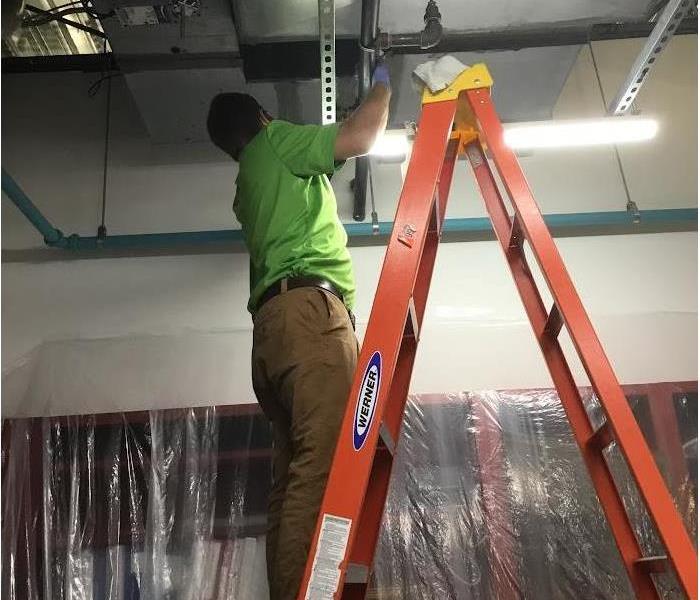 Commercial Restoration
Commercial Restoration
Why SERVPRO? Because when it comes to Commercial/large loss restoration, SERVPRO is here to help!
The term commercial restoration refers to commercial buildings, schools, nursing homes, multi-unit buildings and can even mean residential property if it is of a usually large size. It includes events such as fire, smoke, burst pipes, heating unit puff-backs, biological occurrences such as bodily fluids, sewer back-ups mold/growth infestation; odor problems and even animal invasions or inhabitants.
We understand how overwhelming everything can seem in a time of crisis. SERVPRO of Lebanon/Hanover/Littleton is here for you with trained technicians to make it "Like it never even happened".
Commercial/Large Loss Restoration Services Include:
- Securing the building/facility
- Temporary utility services (Power, Lights, Heating, Plumbing)
- Debris removal
- Complete or partial pack-out of electronics, belongings, documents, equipment, etc. as required
- Water extraction and drying/dehumidification
- Structure and content cleaning
- • Deodorization, disinfection, and odor removal
- Repairs and reconstruction
Restoration Process:
Once the emergency is dealt with; damaged materials removed, content protected, packed and stowed and the drying equipment installed, we move onto the restoration phase. This is where we work with insurance adjusters, specialty tradespeople, owners, and property managers to identify the necessary repairs, develop a scope of work and estimate the costs.
Estimating Process:
The estimating process is actually a fairly smooth process because SERVPRO of Lebanon/Hanover/Littleton, Insurance adjusters and many tradespeople use the industry standard software, Xactimate, which provides pricing, calculating formulas and concise descriptions that define the materials and services with each line item. This insures everyone is "comparing apples to apples".
Because time is critical in protection materials and content, you want to hire a company that is experienced, knowledgeable and equipped to do necessary work. Quickly and correctly. Thus, getting your company/facility/business back up and running with the least interruption.
That company is SERVPRO of Lebanon/Hanover/Littleton
To find out more about SERVPRO of Lebanon/Hanover/Littleton Commercial/Large Loss Services give us a call today at 603-298-6942
When water becomes a hazard
9/21/2022 (Permalink)
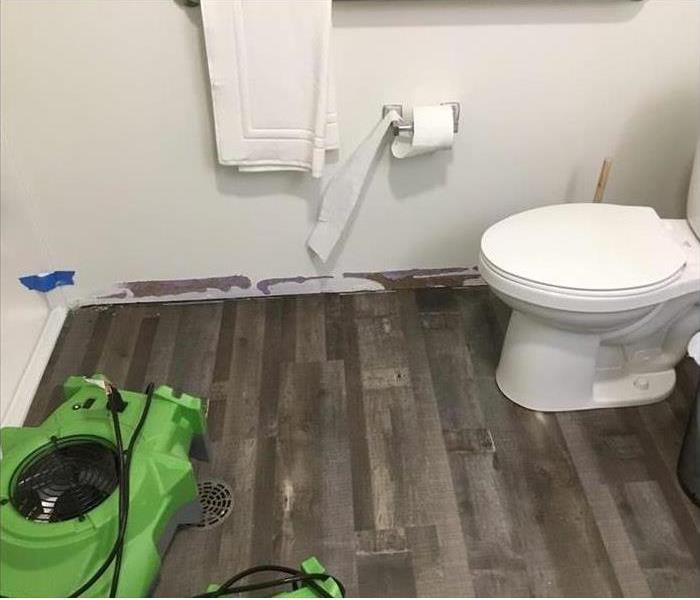 Water damage
Water damage
When water becomes a Bio Hazard!
Homeowners often don't realize that they are responsible for the maintenance and repair of their lateral sewer pipe which is the pipeline between the city sanitary sewer main (which is usually located in the street) and the building.
Sewer backups and toilet overflows can wreak havoc in your home and can create a bio hazard situation very quickly.
Sewage backup should be considered an emergency and dealt with as quickly as possible. We are the water damage restoration specialists with specific training and expertise to safely restore your home or business.
So, what are the most common causes of sewer backups?
In the Northeast we have many older homes, often times these homes can be over 100 years old and one of the causes of sewer backup is aging sewer systems.
The ASCE states that the nation's 500,000-plus miles of sewer lines are on average over thirty years old. This has caused and contributed to the rapid rise of sanitary sewer back ups, overflows and flooded basements.
Tree roots seeking moisture, small roots of trees and shrubs make their way into sewer line cracks and service pipe joints, they can cause extensive damage or blockages as they grow larger. The cost of the clean-up will fall to the problem tree's owner.
Combined pipelines cause problems to arise in systems that combine storm water and raw sewage into the same pipeline.
During many rain storms, the systems are exposed to more volume than they can handle, and the result is a sewage backup situation that allows sewage to spew out into basements and other low lying drains.
There are 3 categories of contaminated water that homeowners may have to deal with in a water leak or sewer back up scenario, they are:
Category 1: "Clean Water"
This is water from a clean source, such as a broken clean water supply line or faucet. If left untreated, category 1 water can quickly degrade into category 2 or 3 water depending upon such factors as time, temperature, and contact with contaminants.
Category 2: "Gray Water"
This water has a significant level of contamination. Sources for category 2 water may include washing machine overflow; toilet overflow with some urine, but no feces; or dishwasher overflow.
Category 3: "Black Water"
This water is grossly unsanitary and any contact should be avoided. Sources for category 3 water could include flooding from rivers or streams, water from beyond the toilet trap, water from the toilet bowl with feces, or standing water that has begun to support microbial growth.
Water can go from Category 1 to category 3 quickly if left untreated and exposed to bacteria.
Give us a call at 603-298-6942 if you are dealing with any water or sewer backup and we'll make it "Like it never even happened"
When water becomes a Bio Hazard!
6/15/2022 (Permalink)
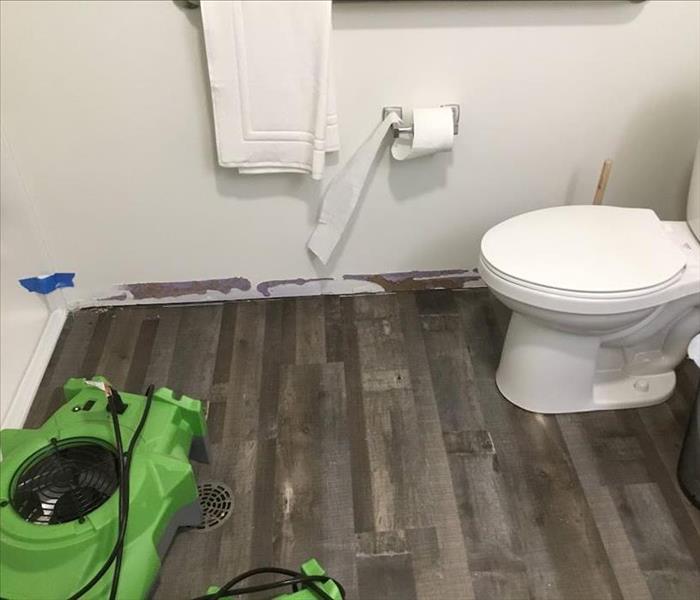 Sewer back ups can lead to a bio hazard situation quickly
Sewer back ups can lead to a bio hazard situation quickly
When water becomes a Bio Hazard!
Homeowners often don't realize that they are responsible for the maintenance and repair of their lateral sewer pipe which is the pipeline between the city sanitary sewer main (which is usually located in the street) and the building.
Sewer backups and toilet overflows can wreak havoc in your home and can create a bio hazard situation very quickly.
Sewage backup should be considered an emergency and dealt with as quickly as possible. We are the water damage restoration specialists with specific training and expertise to safely restore your home or business.
So, what are the most common causes of sewer backups?
In the Northeast we have many older homes, often times these homes can be over 100 years old and one of the causes of sewer backup is aging sewer systems.
The ASCE states that the nation's 500,000-plus miles of sewer lines are on average over thirty years old. This has caused and contributed to the rapid rise of sanitary sewer back ups, overflows and flooded basements.
Tree roots seeking moisture, small roots of trees and shrubs make their way into sewer line cracks and service pipe joints, they can cause extensive damage or blockages as they grow larger. The cost of the clean-up will fall to the problem tree's owner.
Combined pipelines cause problems to arise in systems that combine storm water and raw sewage into the same pipeline.
During many rain storms, the systems are exposed to more volume than they can handle, and the result is a sewage backup situation that allows sewage to spew out into basements and other low lying drains.
There are 3 categories of contaminated water that homeowners may have to deal with in a water leak or sewer back up scenario, they are:
Category 1: "Clean Water"
This is water from a clean source, such as a broken clean water supply line or faucet. If left untreated, category 1 water can quickly degrade into category 2 or 3 water depending upon such factors as time, temperature, and contact with contaminants.
Category 2: "Gray Water"
This water has a significant level of contamination. Sources for category 2 water may include washing machine overflow; toilet overflow with some urine, but no feces; or dishwasher overflow.
Category 3: "Black Water"
This water is grossly unsanitary and any contact should be avoided. Sources for category 3 water could include flooding from rivers or streams, water from beyond the toilet trap, water from the toilet bowl with feces, or standing water that has begun to support microbial growth.
Water can go from Category 1 to category 3 quickly if left untreated and exposed to bacteria.
Give us a call at 603-298-6942 if you are dealing with any water or sewer backup and we'll make it "Like it never even happened"
Fires during construction and renovations
6/6/2022 (Permalink)
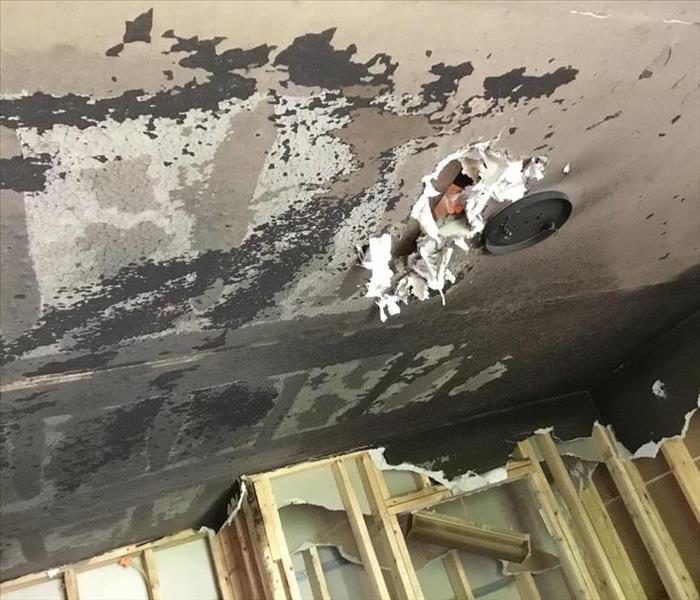 Fire while under construction
Fire while under construction
The days are longer and the weather is warmer, it's time get those construction and renovation projects underway!
Fires in structures under construction are more common than you may think.
According to the NFPA, fire departments responded to an average of 3,840 fires of structures that were under construction and 2,580 fires in structures that were under major renovations per year between 2013-2017.
The cost annually for this is $304 million in direct property damage and three of every four fires in structures under construction involved residential properties.
Fire at a construction site is bound to endanger the lives of workers and anyone else on site. A fire at the site can also damage the structure and destruction of machinery and materials; ultimately putting the job at a stop and delaying the whole project.
It is imperative that every project has a clearly laid out fire protection plan and a project manager/construction manager to make sure that the plan is in place and that every one is aware of the plan and point of contact.
Fires at construction sites can start for many reasons and it is important to know fire types and how to handle each one.
Class A fires occur in wood, rubber, paper,cloth and most plastics. The most effective type of extinguishing agent is one using water, or solutions containing large concentrations of water,because the ‘‘quenching-cooling’’ effect reduces the temperature of the burning material below its ignition temperature. Fire extinguishers suitable for this type of fire are designated with a classification of “A” on the label
Class B fires occur in flammable or combustible liquids, such as petroleum products and greases.
A “blanketingsmothering” effect of an agent that excludes oxygen or inhibits the chemical chain reaction is most effective. Extinguishers labeled “Class B” employ carbon dioxide, dry chemical, Halon or foam.
Class C fires involve electrical equipment. The extinguishing agent must be non-conductive. Carbon dioxide, dry chemical and Halon are the normal types used for electrical fires.
Class D fires involve combustible metals such as aluminum, magnesium, zirconium and titanium. The use of water and some other conventional types of extinguishing agents are ineffective and may cause a violent reaction. These fires can be extinguished with specially prepared agents. Where this hazard exists, extinguishing agents with a D-class rating should be provided. All on-site fire extinguishers should be serviced and inspected.
According to the NSC, The woodworking area should be set up in a remote area of the project.
Where possible, dust-collecting apparatus should be installed for power equipment. Dust, scraps and refuse should be removed regularly and properly disposed of. Smoking should be prohibited in the area.
Cutting and welding sparks cause more
construction fires than any other ignition source.
The person responsible for fire safety should implement fire protection systems and ensure
adequate precautions are taken.
The NSC also recommends to expedite the installation of automatic sprinklers.
Underground mains, hydrants and a source of
water should be provided in the earliest stages of
construction. The goal should be to get sprinklers
in service ahead of combustible occupancy and
immediately following combustible construction.
Making sure that all local codes are being implemented and followed is imperative to a safe and effective worksite.
SERVPRO of Lebanon/Hanover/Littleton welcomes any and all questions about fire safety! Give us a call today at 603-298-6942
Ticks are back!
5/11/2022 (Permalink)
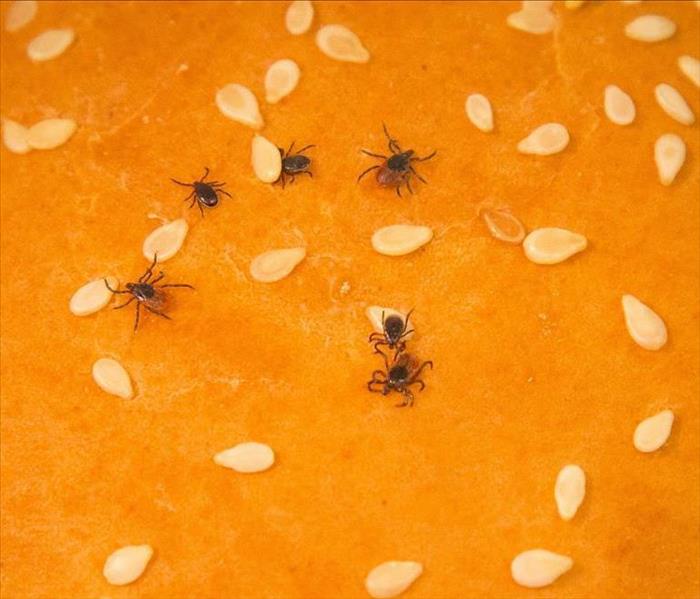 Photo of male and female adult blacklegged ticks on a sesame seed bun to demonstrate relative size. Photo credit: CDC
Photo of male and female adult blacklegged ticks on a sesame seed bun to demonstrate relative size. Photo credit: CDC
The warm weather is returning and the sun is shining, that means more time spent outdoors. After being cooped up for the long Winter months, it's refreshing to be able to get back out there!
We are not the only thing to settle down for the Winter, only to reemerge when the melting and thawing are over.
Ticks!
This is the time of year when ticks rear their ugly little heads and we need to be ready for them!
According to the CDC tick exposure can occur year-round, but ticks are most active during warmer months (April-September).
Knowing which type of tick is common in your local region can help you to determine what steps are best at preventing tick bites.
According to the CDC Geographical Map the most common ticks to inhabit the Northeast are listed below.
American Dog and Brown Dog tick:
- Widely distributed east of the Rocky Mountains. Also occurs in limited areas on the Pacific Coast.
- Transmits: Tularemia and Rocky Mountain spotted fever.
- The highest risk of being bitten occurs during spring and summer. Dog ticks are sometimes called wood ticks. Adult females are most likely to bite humans.
Blacklegged tick (AKA Deer Tick):
- Widely distributed across the eastern United States.
- Transmits: Borrelia burgdorferi and B. mayonii (which cause Lyme disease), Anaplasma phagocytophilum (anaplasmosis), B. miyamotoi disease (a form of relapsing fever), Ehrlichia muris eauclairensis (ehrlichiosis), Babesia microti (babesiosis), and Powassan virus (Powassan virus disease).
- The greatest risk of being bitten exists in the spring, summer, and fall. However, adults may be out searching for a host any time winter temperatures are above freezing. Stages most likely to bite humans are nymphs and adult females.
So, how can we best avoid these guys while still enjoying the great outdoors?
We should first know where to expect ticks.
Ticks live in grassy, brushy, or wooded areas, or even on animals. Spending time outside walking your dog, camping, gardening, or hunting could bring you in close contact with ticks. Many people get ticks in their own yard or neighborhood.
Treat clothing and gear with products containing 0.5% permethrin. Permethrin can be used to treat boots, clothing and camping gear and remain protective through several washings.
*If you are an avid camper or hiker you can buy permethrin-treated clothing and gear.
Use a chemical repellent with DEET, permethrin or picaridin.
Wear light-colored protective clothing.
Tuck pant legs into socks.
Avoid tick-infested areas if possible and stick to the middle of trails when walking them.
Make sure to check yourself and your pets as soon as you come in. It's important to check your clothing as well because ticks may be carried into the house on them and any gear that you or your pet may be wearing.
Any ticks that are found should be removed.
You can tumble dry clothes in a dryer on high heat for 10 minutes to kill ticks on dry clothing after you come indoors.
If the clothes require washing first, hot water is recommended. Cold and medium temperature water won't kill ticks.
The CDC recommends showering within 2 hours of coming inside because it has shown to reduce the risk of getting Lyme disease as well as other tick born diseases. It will also help to wash away any ticks that haven't latched on yet and gives you the opportunity to do an all over body check.
When doing a body check on yourself or your children, pay attention to these areas:
- Under the arms
- In and around the ears
- Inside belly button
- Back of the knees
- In and around the hair
- Between the legs
- Around the waist
Let's look forward to a fun and active Summer free of ticks!!
Keeping Covid at a distance
5/9/2022 (Permalink)
Let's keep Covid away!
Mask mandates are being lifted in most states due to the downswing in Covid cases overall in the US.
As life begins to go back to normal, this is a reminder to us that we can take precautions to prevent the spread of Covid in the future by following the CDC recommendations.
Not all storms come in the form of a weather related disaster; some storms can't be seen. But; they can still be prepared for.
The CDC is still striving to continuously gather data and information in an attempt to give us the most current information available.
Pandemics are something most of us have not had to deal with in our lifetime but are something that we have seen before.
A pandemic is a disease outbreak that spans several countries and affects a large number of people. Pandemics are most often caused by viruses, like Coronavirus Disease 2019 (COVID-19), which can easily spread from person to person.
A new virus, like COVID-19, can emerge from anywhere and quickly spread around the world. It is hard to predict when or where the next new pandemic will emerge.
According to the CDC, if a pandemic is declared, there are some basic steps to follow.
- Wash your hands often with soap and water for at least 20 seconds and try not to touch your eyes, nose or mouth.
- Keep a distance of at least six feet between yourself and people who are not part of your household.
- Cover your mouth and nose with a mask when in public
- Clean and disinfect high-touch objects and surfaces.
- Stay at home as much as possible to prevent the spread of disease.
Follow the guidance of the CDC
How to Prepare Yourself for a Pandemic
In addition to what we have already learned during the Covid outbreak, following the recommendations below can save you time and allow you to focus on what's important.
Learn how diseases spread to help protect yourself and others. Viruses can be spread from person to person, from a non-living object to a person and by people who are infected but don’t have any symptoms.
Prepare for the possibility of schools, workplaces and community centers being closed. Investigate and prepare for virtual coordination for school, work (telework) and social activities.
Gather supplies in case you need to stay home for several days or weeks. Supplies may include cleaning supplies, non-perishable foods, prescriptions and bottled water. Buy supplies slowly to ensure that everyone has the opportunity to buy what they need.
Create an emergency plan so that you and your family know what to do and what you will need in case an outbreak happens. Consider how a pandemic may affect your plans for other emergencies.
Review your health insurance policies to understand what they cover, including telemedicine options.
Create password-protected digital copies of important documents and store in a safe place. Watch out for scams and fraud.
Preparation is key to any disaster or storm and we've covered what you can do to be as prepared as you can be. The CDC offers much information on how you can keep yourself safe during and after a pandemic.
Staying safe and prepared for ANY disaster is the SERVPRO way!
Which Fire Extinguisher should I use?
5/4/2022 (Permalink)
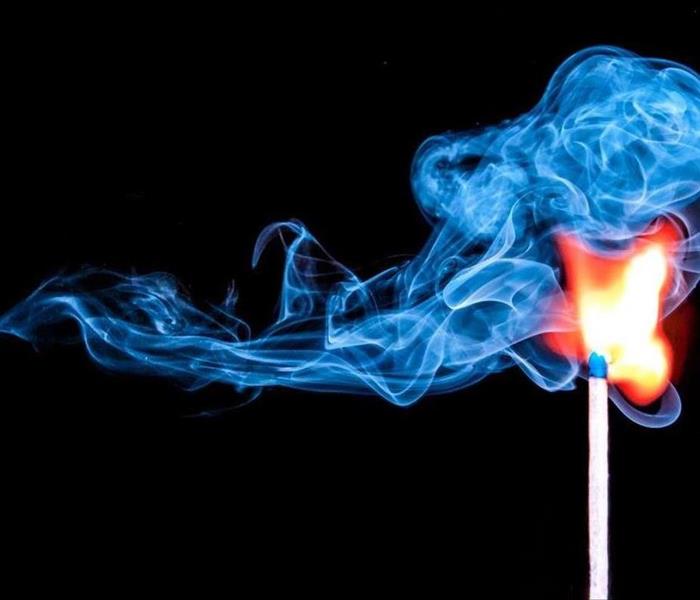 Do you know how to put this fire out?
Do you know how to put this fire out?
Know your fire types so that you can be prepared.
Not all fires are the same and that means not all fires are handled the same. For example, you would never want to throw water onto a grease fire. Learning about fire, can save your life.
Let's take a look at the different types of fires and their classification.
Fire Classes:
Class A: Ordinary Combustibles
- Wood
- Paper
- Cloth
- Trash
- Other ordinary materials
Class B: Flammable Liquids
- Gasoline
- Paints
- Oils
- Grease
- Other flammable Liquids
Class C: Electrical Equipment
Class D: Combustible Metals
- Combustible metal and metal alloys such as Aluminum and Magnesium.
Class K: Combustible Cooking
- Cooking Vessels
- Vegetable oils
- Animal Fats
- kitchen fires
Now that we have learned about the different types and classifications of fire, Let's find out which extinguisher is appropriate for each fire type.
There are a few different types of fire extinguishers available and each serves it's own purpose.
Types of extinguishers:
Water: This extinguisher is for use on Class A fires.
This type is used on paper, wood, coal, cardboard and other solid fuel fires.
Foam: This extinguisher is for use on Class A and B fires.
- This type can be used on paper, wood, coal, cardboard and other solid fuel fires. This type is used on paper, wood, coal, cardboard and other solid fuel fires.
Powder: This extinguisher is for use on Class A,B,C,D and Electrical.
- This type is used on paper, wood, coal, cardboard and other solid fuel fires.
- This type can also be used on flammable liquids, Flammable Metals, Flammable Gases and Electrical.
CO2:This extinguisher is for use on Class B and Electrical fires.
- This type is used on Flammable Liquids and Electrical fires.
Wet Chemical: This extinguisher is for use on Class A and K fires.
- This type is used on paper, wood, coal, cardboard and other solid fuel fires
- Cooking Oil fires such as a deep fat fryer.
Fires spread quick and can be deadly!
Knowing what type of fire extinguisher to use and having it readily available can make all the difference in the world.
If you have any questions about fire remediation or just want to learn more about fire prevention; give us a call at 603-298-6942 or visit our website for blogs and more.






 24/7 Emergency Service
24/7 Emergency Service



